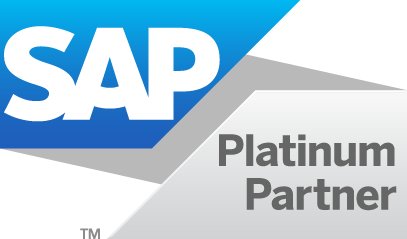Should I upgrade to SAP S/4 HANA?
This is one of the most common questions we are currently asked by our existing SAP clients in Singapore. As one of the leading VARs in Singapore, we continuously are in discussions with existing SAP customers who look to us for guidance on the best way forward. And the questions we get asked are mostly the same (or at least similar). So we decided to put together our own short FAQ and developed the “Ultimate S/4 HANA Upgrade Cheat Sheet” – a wonderful tool that will tell you exactly what you should do if you ask yourself questions related to S/4 HANA.
What is S/4 HANA?
It’s complicated.
I have decided to break down the answer to this question into 3 parts:
It’s a faster database
SAP has decided that (a) too much money is being spent by SAP customers on competitive (i.e. Oracle or MS SQL) databases, and some of this money should be spent on SAP’s proprietary databases instead, and (b) conventional databases are too slow to meet the growing demands of analytics within Industry 4.0 and the internet of things.
As a result, SAP has developed an in-memory database that captures and keeps all transaction relevant data in RAM memory, rather than on the hard-disk. This speeds up data processing significantly (average DRAM access is about 100 times faster than hard drives) and enables real-time analytics on transaction data.
The difference of access times between hard drive and RAM is similar for server hardware configuration – and the difference is staggering (specifically if data is not read sequentially, but random on the hard drive).
This paradigm shift on the database allowed the ERP development team within SAP to change the way data is stored internally. As hard-disk speed is no longer a limiting factor, aggregates and indices are no longer necessary. (Previously you needed several additional tables to aggregate data for faster processing. Now you can access the main transaction tables directly, and eliminate those aggregates and indices which are no longer required, resulting in significantly less “clutter”).
So what’s the benefit?
Besides speed, increased scalability, and being future-ready, there are 2 other benefits from having a HANA database:
Less hardware required.
Due to a reduced tablespace (no aggregates), you will need less hard-disk space. Therefore also backups are easier and faster, and you have a reduced number of tables to work with.
No separate data warehouse required.
If you run your entire organization within SAP, and you now run SAP on HANA, you potentially may not need a separate BW installation anymore (unless you have a number of separate data sources for your BI reports). You can now run your analytics straight on your SAP transaction data. This is huge, as a) you have significantly less complexity (you don’t need to manage a separate data warehouse, deal with ETL issues, etc.) and b) you work on real real-time data (not on extracted, consolidated, transformed and eventually loaded data which may not be up-to-date).
Granted – not every company needs to run analytics on up-to-the-minute actual data, but if you are an organization that needs the latest available data to make the best possible decisions, this is definitely an important consideration.
It’s a nicer user interface
Ok – so when I say “nicer”, I mean “wow, NICE!” kind of nicer. Like in modern, mobile, tablet with widgets kind of nice. Like that:

nice, right? Others thought so as well – SAP even won the prestigious red dot award for this design. The SAP Fiori User Interface received the Red Dot in the Interaction Category at the Red Dot Award: Design Concept 2015. Oh, and they won another one in 2016 for the embedded analytics. In case you need further convincing, we are happy to show you a demo. Just give us a shout. Alternatively, you may want to have a look at a video that showcases the new Fiori 2.0 interface in action.
It can finally provide real-time business insights to the senior executive
The Fiori 2.0 interface, coupled with the HANA database, finally allows the CFO to get what they always wanted when they decided for SAP as the integrated ERP system to help run their organization: real-time visibility on the State of Finance of their company – anytime, anywhere. And I think it’s pretty cool if you have your liquidity forecast on your mobile device, which is in real-time connected to the transaction data (i.e. invoiced sales, confirmed purchase orders, posted journal vouchers, current bank balances) across your entire organization. (Don’t forget – we are talking about a (significantly) faster database, which is able to draw data from all those different company codes in your system without bringing your entire SAP environment to its knees).
Instead of running complicated and lengthy reports – ideally at night, as otherwise running those reports affects system performance to a degree it severely impacts user’s ability to do their job – you now can simply log into your SAP system on your tablet and get consolidated, real-time information on your dashboard. And, unlike reports that potentially are printed and put on your desk, you can simply drill-down on all those KPI’s that you want to have more information about. So you know within seconds that the reason that your global cash-flow forecast does not look as great as you like, is due to a postponed payment commitment of a major customer in Thailand. And you – hopefully – can do something about it immediately.
So, in a nutshell, that is what SAP S/4 HANA is all about: a super-fast in-memory database, coupled with a fantastic new user interface, allowing you to run your business in the way you always wanted – with real-time business insight at any time, anywhere.
Do I need to upgrade to SAP S/4 HANA?
That’s an easy one: no. You don’t “need” to upgrade to S/4 HANA. If, after reading the above answer to “What is SAP S/4 HANA?” you decide that you don’t necessarily benefit from having a faster database, real-time business analytics or the advantage of the new user interface SAP Fiori, then you can simply continue with your existing SAP ERP environment. SAP will continue to support SAP ERP and SAP Business Suite on AnyDB for a very long time.
However, new innovations will be built on SAP HANA. So if your SAP ERP system runs on an Oracle, Sybase or MS SQL, you may not be able to benefit from additional new features which will be introduced in the coming years.
My hardware is old, and I need a tech refresh. What should I do?
As opposed to the previous question, the answer to this question is a bit more complicated, and starts with: “it depends..”. If you look at the Ultimate SAP S/4 Upgrade Cheat Sheet, you will see that it is not as simple as “buy new hardware”. If your hardware needs to be replaced, there are many factors to consider:
- Do you want to keep hardware on-premise, or do you want to consider moving your system to the cloud?
- Do you have intentions to upgrade to S/4 HANA anytime soon?
- Is SAP a strategic component of your business operations, or are you looking at alternative ERP systems?
- Has your business / your processes changed since the time you implemented SAP (or since the last time you did a major upgrade in conjunction with a business process review study)?
All those questions will influence whether you should just buy replacement hardware, get S/4 ready hardware, contact a cloud provider or maybe just keep your existing hardware for a bit longer.
We’ve tried to address those questions in our Ultimate S/4 HANA Upgrade Cheat Sheet, so that you can find what is probably the most suitable answer to your specific situation.
Can I run S/4 HANA on my existing hardware?
Unfortunately, most probably not. If you are looking at S/4 HANA certified hardware, then the minimum main memory (RAM) required is 128GB. (See here for a list of certified appliances). So most likely you will need to purchase new hardware for your S/4HANA environment. You could use this as an opportunity to evaluate whether you want on-premise hardware at all, or if your organization could benefit from moving your SAP environment to the cloud.
As an example, we currently offer our clients 4 options to move onto S/4 HANA:
- Replace your existing hardware with new hardware from your preferred hardware partner (we work with all leading hardware partners, so we can bundle hardware into a potential upgrade solution)
- Have dedicated hardware hosted in the cloud through a local data center (dedicated private cloud),
- Use Amazon Web Services (AWS) to host your S/4 HANA in a very scalable virtual private cloud, or
- Consider SAP S/4HANA Public Cloud as an alternative, subscription-based option
So if you just bought SAP ERP a couple of years back, or you have recently bought new hardware for an SAP upgrade, you may want to consider to delay a potential upgrade to SAP S/4 HANA to a later time (Unless you can trade-in your hardware at a good price with your existing vendor…).
As you can see, the question of whether you should upgrade to SAP S/4 HANA or not is not as straightforward to answer as many may want you to believe. You really need to consider your individual situation to ensure that you not only get the latest functionality and future-proof software, but also that you secure the ROI of your initial SAP implementation or your latest upgrade.
If you have any other questions, comments or points you think we overlooked in this article, please do comment below. Your experiences with SAP S/4HANA und upgrades are also very welcome. We value your feedback and input, as it helps not only us but also other readers of this blog to better decide on their upgrade to SAP S/4HANA.


















